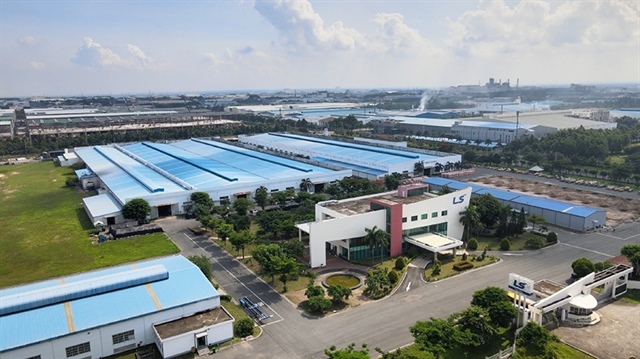A deeper supply crunch due to new wave of COVID-19?
A deeper supply crunch due to new wave of COVID-19?
The new wave of COVID-19 pandemic has taken a serious toll and posed major challenges on the whole economy, particularly the supply chain sector. Frederic Neumann, co-head of Asian Economics Research at HSBC, discussed about its impacts on supply chain in a global context and in Vietnam as well.
|
As the West reopens, much of Asia is still tussling with the virus. That potentially sets us up with intensifying supply bottlenecks in the coming months. Across the region, this could pose headwinds to growth while simultaneously raising inflation everywhere. Ultimately, disruptions in factory Asia will prove transitory, and so should the resultant price pressures. However, as challenges in Asia mount, the ripples could spread far and wide and make for a volatile few months. Not smooth sailing just yet.
Over the past year, most of Asia has contained the virus with admirable effectiveness. Its manufacturers, to be sure, were hobbled initially when lockdowns were imposed. But operations swiftly resumed, while they remained constrained elsewhere.
The region was therefore able to churn out the goods that the world needed, in the process powering exports to unprecedented highs - even if that prowess was in the end not quite enough to fully alleviate bottlenecks that persist to this day.
The assumption of many, from central bankers to investors, appears to be that global supply disruptions are bound to ease soon enough. The West, by and large, is returning to work, and pandemic-related goods demand should ease as demand shifts towards services.
That seems plausible. But there are a couple of complications.
The first relates to how quickly goods demand will normalize. It may take a while. Sure, economies in the West are re-opening, which benefits services, but sales of 'stuff' remain brisk, especially in the US were a hefty stimulus is powering consumer purchases.
As we've noted, eventually a recalibration of services and goods spending by US households should curb the latter, but this may still be a few months away. Plus, and this is often overlooked, retail inventories are extremely depressed, falling to their lowest level, relative to sales, on record last month.
This suggests that a powerful restocking cycle will take over, even if consumers throttle their purchases of goods eventually. And these things are powerful affairs: inventory rebuilding can drive a manufacturing cycle for up to three quarters. And with shortages having caught out many businesses over the past year, there is reason to believe that they will want to add an extra cushion of stocks this time around.
The second complication relates to Asia's supply chains. These have been remarkably resilient - shaking off US-China trade tensions as well as the virus over the past few years. In the near-term, however, there is a risk that the region's manufacturing engine might not work quite as smoothly as one would like.
The foremost challenge is the virus. Excluding India, daily infections in Asia are now running close to their highest level since the start of the pandemic. In Japan, Singapore, Malaysia, Thailand, Vietnam, and Taiwan - all critical cogwheels in regional supply chains - recent outbreaks have prompted a tightening of social distancing requirements.
It is true that governments have become better over time at tailoring restrictions so that they don't interfere overly with critical manufacturing operations. It is also true that business have adjusted greatly, becoming more resilient and better at sustaining production.
At the same time, even if the impact of various restrictions is not as pronounced as it was a year ago, they are still bound to represent a drag on manufacturing activity - from reduced working hours and staffing to slower logistics. That's all the more so because many of the factories in emerging Asia still employ a comparatively high number of workers, being predominantly assembly sites with less automation than in more advanced economies.
In Vietnam, a curfew was recently imposed in Bac Ninh province, a major manufacturing hub. Workers are now sleeping on factory floors to reduce community transmissions. Malaysia just imposed a two-week nation-wide lockdown. In Thailand, a large meat processing facility - a major export - was shut after an outbreak among workers. In Taiwan, travel has been severely curtailed. The list goes on.
It's easy to shrug all this off as isolated measures with little impact on manufacturing output. But given how little slack there is currently in global supply chains, even a marginal slowdown in production or transportation can send ripples far and wide. It's also easy to see these markets are secondary cogs in the global manufacturing engine next to giants like Japan, China, the US, Germany, and Korea.
Yet, as engineer knows all too well, when secondary cogs become stuck, the entire engine sputters. Malaysia is one of the world's largest sites for testing and packaging automotive chips. A third of smartphones globally are assembled in Vietnam. Disk drives? Think Thailand. ...and when it comes to semiconductor production, especially the higher end stuff, Taiwan is really the central driveshaft of world manufacturing than a secondary cog.
Meanwhile, there are a few additional headaches. In Southern China, primarily Guangdong Province, electricity shortages have emerged due to a blistering heatwave. Taiwan is also struggling with lack of power, as well as a shortage of water. In a global production system as finely balanced as it is at the moment, these shortfalls come just at the wrong time.
Worrying stuff. It's important, though, to keep things in perspective. The current virus surge will eventually be crushed by vaccines. And delivery schedules suggest that things could improve dramatically from the end of the third quarter.
As the world economy grapples with shortages for all sorts of goods, however, that still seems like quite a while away.




























